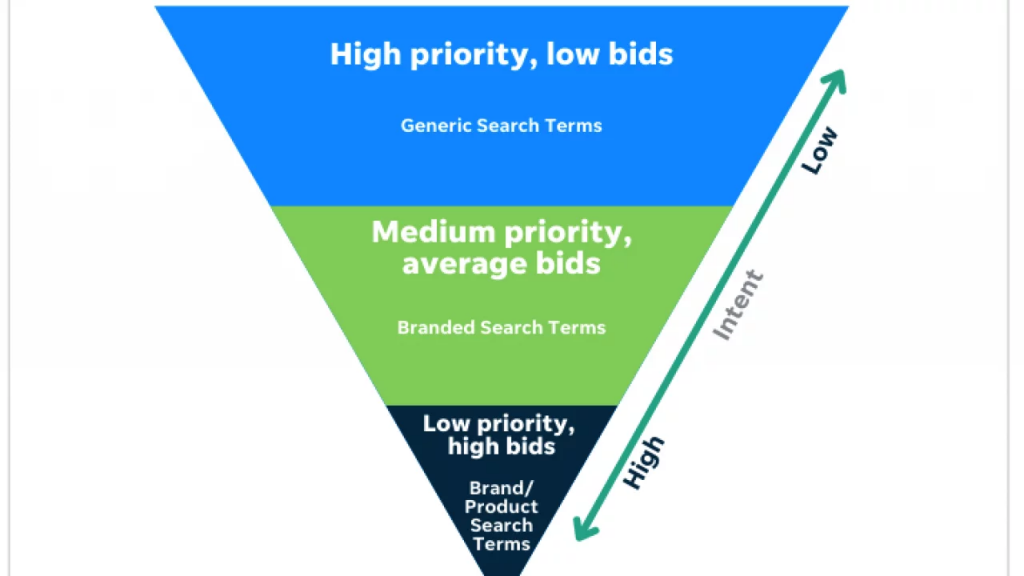In the ever-evolving landscape of online advertising, Google Ads has emerged as a pivotal platform for businesses aiming to boost their online presence and drive revenue. Among the plethora of strategies and metrics available, Return on Ad Spend (ROAS) stands out as an important factor that directly ties advertising efforts to the bottom line. In this comprehensive guide, we will delve into the world of ROAS in Google Ads, exploring its intricacies, the target ROAS bidding strategy and how you can leverage it to optimize your ad campaigns for maximum revenue generation.
What is ROAS Bidding?
Return on Ad Spend (ROAS) is a crucial metric that measures the effectiveness of your advertising campaigns by evaluation of the revenue generated against the amount spent on advertising. It offers a clear insight into the profitability of your advertising efforts, enabling you to make informed decisions about where to allocate your advertising budget.
ROAS is calculated by dividing the revenue generated from your ad campaigns by the total ad spend and multiplying the result by 100 to express it as a percentage:
- ROAS = (Revenue / Ad Spend) x 100
For instance, if you spent $100 on a Google Ads campaign and it generated $500 in revenue, your ROAS would be 500%. This means that for every dollar spent on advertising, you earned $5 in return.
However, achieving a high ROAS isn’t just about minimizing ad spend and maximizing revenue. It’s about finding the right balance between these two factors to ensure that your advertising efforts are not only profitable but also sustainable in the long run.

Understanding the Target ROAS Bidding Strategy
In Google Ads, several bidding strategies are available, each with its own approach to optimizing your ad placements and bids. One of the most effective strategies, especially for businesses focused on revenue generation, is the Target ROAS bidding strategy.
The Target ROAS bidding strategy allows you to set a specific ROAS value that you aim to achieve for your campaigns. Google’s automated bidding algorithm then adjusts your bids in real-time during auctions to help you achieve that target ROAS. This strategy is particularly beneficial when you have historical conversion data to work with.
Here’s how the Target ROAS bid strategy works:
Setting Your Target ROAS
Begin by determining the desired return on ad spend that aligns with your business objectives. Different industries and business models might have varying ideal ROAS values. For example, e-commerce companies might aim for a higher ROAS due to product prices and profit margins, while lead generation businesses might prioritize a lower cost per conversion.
Algorithmic Optimization
Once you’ve set your target ROAS, Google’s algorithm analyzes historical conversion data and auction-time signals to make split-second bidding decisions. This real-time adjustment of bids allows your ads to appear in front of users who are more likely to convert based on their behavior and other factors.
Bid Adjustments
The bidding algorithm adjusts individual bids for each auction, depending on the likelihood of conversion. If a particular keyword or audience segment is more likely to result in a sale, the algorithm will bid more aggressively, and vice versa.
Efficient Allocation
The Target ROAS bidding strategy allocates your budget more efficiently across campaigns, ad groups, and even keywords. It directs more funds towards avenues with a higher potential for generating revenue.
By employing Target ROAS bid strategies, businesses can streamline their advertising efforts, allowing their campaigns to reach the users who are most likely to generate revenue. This automated approach saves time, optimizes bids, and ensures that your advertising budget is channeled into avenues that align with your revenue goals.

Implementing the Target ROAS Bidding Strategy
Implementing the Target ROAS bidding strategy within your Google Ads account requires careful consideration and a strategic approach. Here are the steps to effectively integrate this automated bidding strategy into your campaigns:
Setting Conversion Value
Before you embark on the Target ROAS journey, it’s essential to define the value of each conversion for your business. This means understanding how much revenue a single conversion generates. By clearly understanding conversion value, you can set realistic ROAS targets that align with your revenue goals.
Choosing the Right Target ROAS
Your target ROAS should be based on your business objectives, industry norms, and historical data. If you’re new to ROAS, consider starting with a conservative target and gradually increasing it as you gather more insights from your campaigns.
Assessing Automated Bid Strategy
Target ROAS falls under the umbrella of smart bidding strategies, where Google’s algorithms do the heavy lifting. Evaluate if your business is at a stage where automated bidding makes sense. If you have enough conversion data and historical performance metrics, the automated bidding strategy can be a game-changer.
Segmenting Your Google Ads Campaigns
Depending on your business structure and offerings, you might want to separate campaigns with significantly different values or target ROAS. This segmentation allows for better control over bidding strategies, budget allocation, and ad messaging.
Leveraging Historical Data
Historical data is a goldmine when setting up the Target Roas strategy. Analyze your past campaigns to identify trends and patterns regarding conversion volume, conversion values, and average ROAS. This data will inform your target ROAS setting and help Google’s algorithm make more accurate bidding decisions.
Starting in the Learning Phase
After implementing the Target ROAS strategy, your campaigns will enter a learning phase where the algorithm adapts to your objectives and audience behavior. During this phase, it’s crucial not to make frequent adjustments or switch strategies prematurely, as it can disrupt the learning process.
Continuous Monitoring and Optimization
While Target ROAS is automated, it doesn’t mean you should set it and forget it. Regularly monitor your campaigns, conversion data, and actual ROAS performance. Adjust your target ROAS or make bid adjustments if you notice significant deviations from your goals.
Leveraging Target ROAS Across Different Campaign Types
Target ROAS isn’t limited to specific campaign types; it can be applied to various campaign structures to achieve optimal results
Search Campaigns: Use Target ROAS to focus on keywords that drive conversions with higher value. Assign higher targets to keywords that consistently generate revenue and adjust bids for lower-performing ones.
Shopping Campaigns: For e-commerce businesses, implementing Target ROAS in shopping campaigns can be highly effective. Group products with similar ROAS performance together and set target ROAS accordingly.
Display Campaigns: Extend Target ROAS to your campaigns to reach a wider audience. Leverage Google’s display network while maintaining your desired ROAS levels.
Maximize Conversions and Maximize Conversion Value: Google Ads offers “Maximize Conversions” and “Maximize Conversion Value” strategies. Use these to generate as many conversions as possible while adhering to your target ROAS.
Portfolio Bid Strategies: If you manage multiple campaigns, consider using a portfolio bid strategy to optimize bids across campaigns collectively. This approach can help you achieve an overall target ROAS across different campaign types.
Recommended Target ROAS and Baseline ROAS
While there’s no one-size-fits-all recommendation for ROAS target, consider factors like profit margins, industry standards, and business goals. Aim for a target ROAS that ensures profitability while accommodating campaign costs.
Baseline ROAS serves as a point of reference to measure the success of your campaigns. Historical data can help you establish a baseline and track improvements over time. Remember that different campaigns might have varying baseline ROAS values due to their nature and goals.
Target ROAS vs. Target CPA
When it comes to optimizing your Google Ads campaigns, both Target ROAS and Target CPA are powerful strategies designed to enhance your return on investment, While they share similarities, they operate with distinct focuses and nuances that cater to different business objectives. Let’s explore the differences between Target ROAS and Target CPA to help you make an informed decision.
Target ROAS
Target ROAS (Return on Ad Spend) places revenue generation at the forefront. With this strategy, you set a target ROAS percentage that aligns with your business goals. Google’s smart bidding algorithm then adjusts your bids in real time to maximize revenue while staying within your target ROAS.
This strategy is particularly effective for businesses with varying products or services with significantly different ROAS values. It allows you to allocate resources where they matter most, driving more revenue from high-value offerings.
Target CPA
Target CPA (Cost Per Acquisition) prioritizes conversions by aiming to achieve a specific cost per conversion. You set a target CPA, and the bidding algorithm strives to get as many conversions as possible within that cost threshold. This approach is ideal when your primary goal is to drive a specific volume of conversions within a specific budget constraint.
Choosing Between the Two
The choice between Target ROAS and Target CPA hinges on your business objectives:
Revenue Emphasis: If maximizing revenue is your primary concern, Target ROAS is the way to go. This strategy is advantageous when your products or services have varying profit margins, and you want to ensure that your advertising efforts yield the highest possible returns.
Conversion Volume: If your goal is to increase the number of conversions while maintaining a consistent cost, Target CPA is a better fit. It works well for businesses that want to capture a large market share and achieve a specific volume of conversions within a specified budget.
Remember, the choice isn’t rigid. You can experiment with both strategies to determine which aligns better with your business goals and yields the best results.
Conclusion
In the ever-evolving landscape of online advertising, the Google Ads dashboard offers an array of tools and strategies that can shape the destiny of businesses. From targeting specific costs to optimizing CPC bids, every setting holds the potential to influence actual conversion values and shape future conversions. The flexibility of bid limits, even at the ad group level, empowers advertisers to strike a delicate balance between max conversions and target cost, driving online sales and propelling growth.
Calculating ROAS isn’t just a mathematical exercise; it’s a pathway to understanding the true value of your advertising efforts. Calculating ROAS and associated values, such as target return and actual conversions, you gain insights into your campaigns’ strengths and areas that need attention. This understanding is crucial in industries with very different ROAS benchmarks and average return expectations.
As you navigate these digital frontiers, harness the tools and settings, and calculate ROAS to your advantage. Recognize that a default setting isn’t the end-all; It’s a starting point you can adjust to suit your specific return objectives. Multiply your efforts by adopting tips, techniques, and strategies that deliver valuable results. Save resources by targeting the right audience and setting bid limits that ensure an advantage in the competitive landscape.

A PPC specialist who started with organic social media. For several years, the core of his activities are:- Google Ads, Microsoft Ads, Meta Ads, TikTok Ads, Twitter Ads, Linkedin Ads. He has led campaigns with a global reach, e.g. for FootballTeam, G2A, ETOTO, as well as many smaller campaigns in the sports, construction and financial industries. Has full focus on ROAS. Privately, a fan of football, history of wars and Star Wars.

